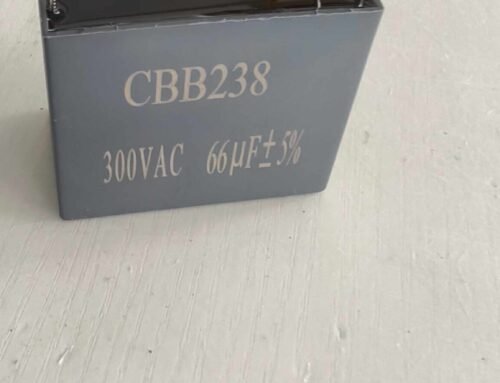Keraminio kondensatoriaus apibrėžimas
Keraminis kondensatorius (keraminis kondensatorius; keraminis kondensatorius) dar vadinamas porcelianiniu dielektriniu kondensatoriumi arba monolitiniu kondensatoriumi. Gerai suprantama, kad kaip dielektrikas naudojama didelės dielektrinės skvarbos ir mažų nuostolių keraminė medžiaga, o sidabro sluoksnis užpurškiamas iš abiejų keraminio pagrindo pusių, tada sidabro plėvelė išdegama aukštoje temperatūroje kaip elektrodas ir prilituojama prie švino, o išorinis paviršius padengiamas apsauginiais magnetiniais dažais arba hermetizuojamas epoksidine derva; jo talpą lemia keramikos gabalo plotas ir storis. Jos atsparumą įtampai lemia keramikos storis. Jo forma dažniausiai būna apskrita, tačiau yra ir vamzdžio bei apvalios formos. Dažniausiai jis būna mėlynos spalvos, po to geltonos, rudos ir t. t. Jo savybės yra nedidelis dydis, geras atsparumas karščiui, maži nuostoliai, didelė izoliacijos varža, nedidelė talpa ir tinka aukšto dažnio grandinėms.
Keraminių kondensatorių tipai
1、Skiriami pagal atsparumą įtampai: aukštos įtampos porcelianiniai dielektriniai kondensatoriai (virš 1KVDC), žemos įtampos porcelianiniai dielektriniai kondensatoriai (iki 500VDC).
2、Pagal struktūrą: apvalus lustinis kondensatorius, vamzdinis kondensatorius, stačiakampis kondensatorius, lustinis kondensatorius, šerdį perforuojantis kondensatorius ir t. t.
3、Skirstykite pagal terpę: I klasės porcelianinis dielektrinis kondensatorius, II klasės porcelianinis dielektrinis kondensatorius
a: I klasės porcelianiniai dielektriniai kondensatoriai: NP0, SL0, COG.
b: II klasės dielektriniai kondensatoriai: X7R, X5R, Y5U, Y5V.
Y5P pasižymi geriausiomis temperatūros kompensavimo savybėmis, o talpos vertės kitimo diapazonas yra ±10% visame temperatūros diapazone.
Y5U neturi temperatūros pokyčius kompensuojančios savybės, o talpos vertės pokyčio diapazonas yra +22%/-56% visame temperatūros diapazone.
Y5V rodo veikimą nuo -30 iki +85 laipsnių, nuokrypis nuo -82% iki +22% visame temperatūros diapazone
X5R reiškia darbą esant -55 ~ +85 ℃, plius arba minus 15% nuokrypis visame temperatūros diapazone
X7R nurodo, kad veikia nuo -55 iki +125 laipsnių Celsijaus, o nuokrypis visame temperatūros diapazone yra plius arba minus 15%.
X7R kondensatoriai vadinami temperatūriškai stabiliais keraminiais kondensatoriais. X7R kondensatorių talpa kinta esant skirtingoms įtampos ir dažnio sąlygoms, ji taip pat kinta su laiku, jie daugiausia naudojami mažiau reikliose pramoninėse programose, pagrindinė jų savybė yra ta, kad talpa gali būti didesnė esant tam pačiam tūriui.
Y5V kondensatorius yra tam tikros rūšies bendrosios paskirties kondensatorius su tam tikru temperatūros apribojimu, kuris turi didelį dielektrinį koeficientą ir gali lengvai pasiekti mažą tūrį ir didelę talpą, o jo talpa akivaizdžiai kinta priklausomai nuo temperatūros, tačiau kaina yra mažesnė. Jie plačiai naudojami tose srityse, kur talpa ir nuostoliai nėra dideli.
NPO kondensatorius yra vienas iš dažniausiai naudojamų monolitinių keraminių kondensatorių, pasižyminčių temperatūros kompensavimo savybėmis. Kondensatoriaus temperatūrinis dreifas yra labai mažas, o pagal talpą ir dielektrinius nuostolius jis yra vienas stabiliausių kondensatorių. Jis tinka osciliatorių ir rezonatoriaus plyšinių grandinių kondensatoriams bei aukšto dažnio grandinių jungiamiesiems kondensatoriams. x7R kondensatoriai žinomi kaip temperatūriškai stabilūs keraminiai kondensatoriai.

"Cucab" kondensatoriaus plėvelė




